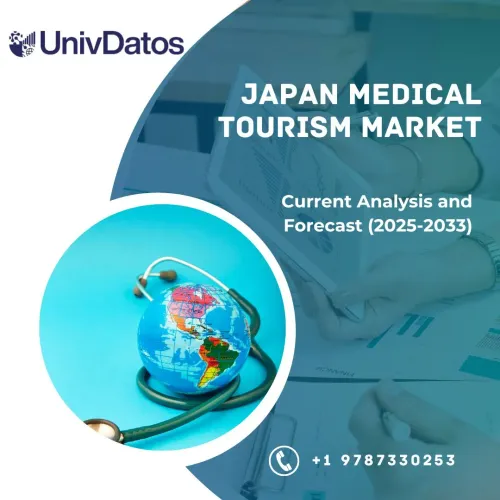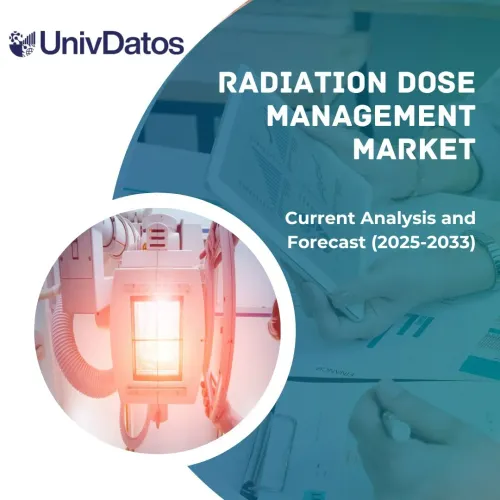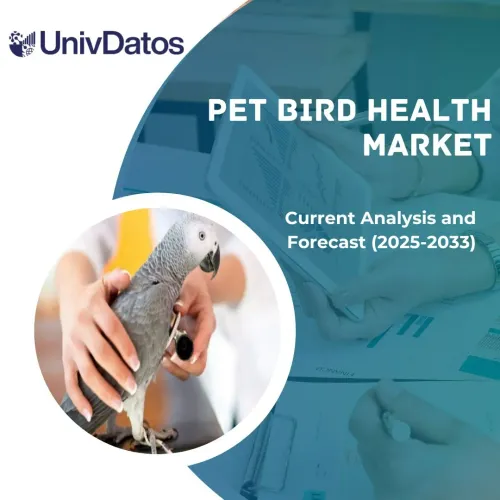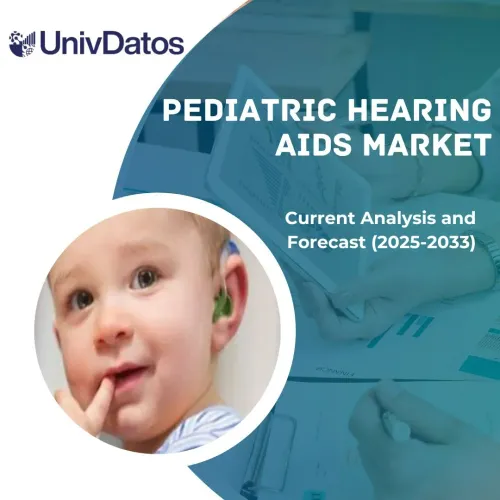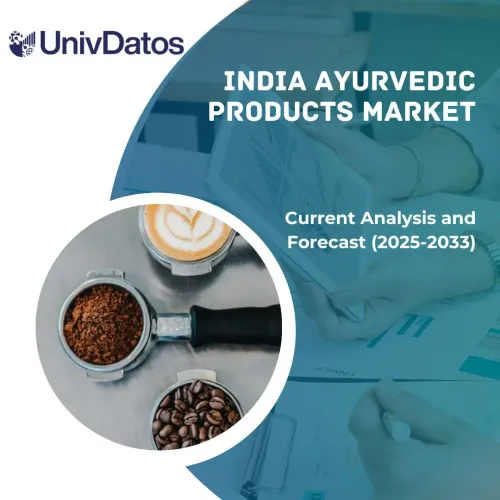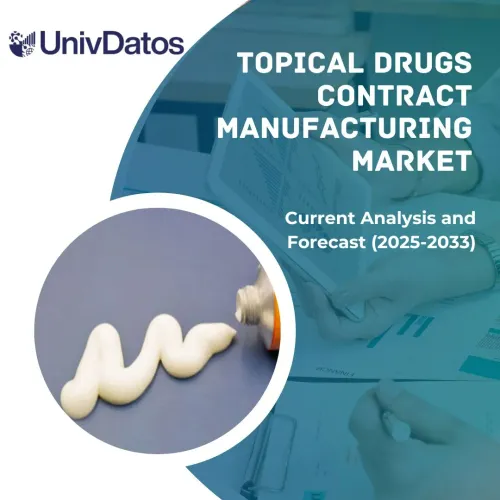- Strona główna
- O nas
- Branża
- Usługi
- Czytanie
- Kontakt
Rynek Inhibitorów Fosfodiesterazy (PDE): Aktualna Analiza i Prognoza (2023-2030)
Nacisk na Rodzaj Leku (Specyficzny, Niespecyficzny, Inne); Sposób Podawania (Doustny, Pozajelitowy, Inne); Zastosowanie (Nadciśnienie Płucne, Zaburzenia Erekcji, Choroby Neurologiczne, Inne); Region/Kraj
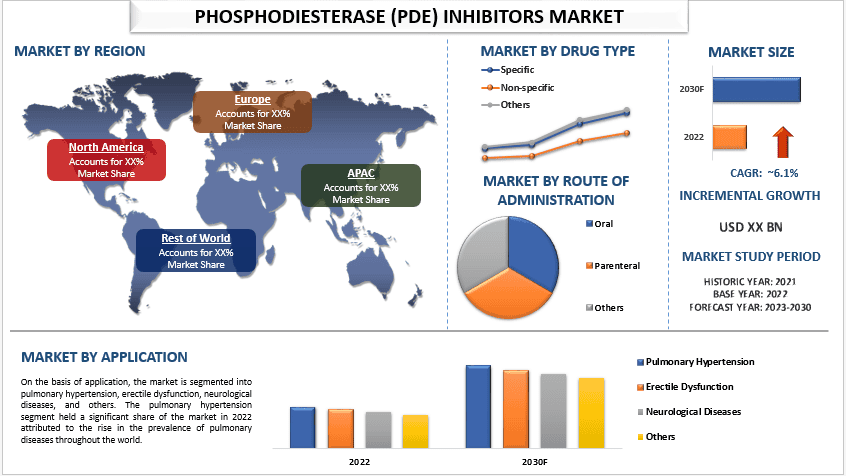
Wartość rynku Inhibitorów Fosfodiesterazy (PDE) w 2022 roku wyniosła 2,82 miliarda USD, rosnąc ze średnią roczną stopą wzrostu (CAGR) 6,1% w okresie prognozy od 2023 do 2030 roku.Ze względu na wzrost niezdrowego stylu życia ludzi, rosnącą liczbę przypadków zaburzeń erekcji, starzenie się społeczeństwa i rosnące zapotrzebowanie na nowe terapie lekowe w sektorze opieki zdrowotnej.Na przykład, według raportów Światowej Organizacji Zdrowia (WHO), prawie 150 milionów ludzi na całym świecie cierpi na zaburzenia erekcji, a liczba ta szacowana jest na 230 milionów do 2025 roku.Wiele czynników doprowadziło do wzrostu rynku, w tym dostępność inhibitorów PDE nowej generacji oraz zwiększona liczba chorób przewlekłych na całym świecie. Liczne firmy farmaceutyczne konkurują o opracowanie skutecznych antybiotyków glikopeptydowych w celu leczenia dominujących chorób, co również napędza wzrost rynku.Na przykład, we wrześniu 2020 roku, amerykańska firma Aspargo Laboratories, Inc. otrzymała międzynarodowe prawa do Sildenafilu w sprayu doustnym, aktywnego składnika Viagry, który jest stosowany w leczeniu zaburzeń erekcji.
Niektórzy z głównych graczy działających na rynku to Pfizer Inc.; Novartis AG; AbbVie Inc.; Dr. Reddy’s Laboratories Ltd.; Bristol-Myers Squibb Company; GSK plc.; Bayer AG; Teva Pharmaceuticals Industries Ltd.; Lilly; AstraZeneca. Kilka fuzji i przejęć (M&A) wraz z partnerstwami zostało podjętych przez tych graczy w celu zapewnienia klientom zaawansowanych technologicznie i innowacyjnych produktów/technologii.
Informacje Przedstawione w Raporcie
„Wśród rodzajów leków, segment leków specyficznych będzie rósł ze wysokim CAGR w okresie prognozy”
W oparciu o rodzaj leku, rynek jest podzielony na specyficzne, niespecyficzne i inne. Oczekuje się, że segment leków specyficznych będzie rósł ze wysokim CAGR w okresie prognozy ze względu na zróżnicowane zarządzanie i leczenie chorób takich jak ostra dekompensacja niewydolności serca, łagodny rozrost prostaty, łuszczyca i bezdech noworodków. Oczekuje się, że inhibitory PDE3 spośród wszystkich specyficznych inhibitorów PDE będą rosły ze wysokim CAGR w okresie prognozy.Na przykład, badania eksperymentalne zgłoszone w Journal of Experimental Pharmacology w marcu 2021 roku wskazują na możliwą rolę inhibitorów PDE3, PDE4, PDE5 i PDE7 w leczeniu astmy.Zatem, wśród rodzajów leków, oczekuje się, że segment leków specyficznych będzie rósł ze wysokim CAGR w okresie prognozy.
„Wśród sposobów podawania, kategoria doustna będzie rosła ze wysokim CAGR w okresie prognozy”
Według sposobu podawania, rynek jest podzielony na doustny, pozajelitowy i inne. Oczekuje się, że segment doustny będzie rósł ze znacznym CAGR w okresie prognozy głównie ze względu na wygodę oferowaną przez tabletki doustne. Ponadto są one opłacalne i umożliwiają łatwiejszą produkcję na dużą skalę.Na przykład, Narodowa Biblioteka Medycyny poinformowała o badaniu pacjentów we wrześniu 2022 roku dotyczącym preferowanego sposobu podawania, a oni wybrali tabletki doustne co drugi dzień. Ponadto, artykuł przeglądowy autorstwa Frontiers w lutym 2021 roku wspomniał, że około 84% najlepiej sprzedających się produktów farmaceutycznych jest podawanych doustnie.Zatem, wśród sposobów podawania, oczekuje się, że kategoria doustna będzie rosła ze wysokim CAGR w okresie prognozy.
„Wśród zastosowań, segment zaburzeń erekcji będzie rósł ze wysokim CAGR w okresie prognozy”
W oparciu o zastosowanie, rynek jest podzielony na nadciśnienie płucne, zaburzenia erekcji, choroby neurologiczne i inne. Oczekuje się, że segment zaburzeń erekcji będzie rósł ze wysokim CAGR w okresie prognozy ze względu na rosnącą liczbę przypadków chorób sercowo-naczyniowych, wysokiego poziomu cholesterolu, wysokiego ciśnienia krwi, cukrzycy, otyłości i palenia tytoniu. Wzrost przypadków zaburzeń erekcji w populacji napędza wzrost tego segmentu na rynku.Na przykład, według National Institutes of Health, w 2022 roku, zaburzenia erekcji (ED) są bardzo powszechnym schorzeniem w USA i dotykają około 30 milionów mężczyzn w kraju każdego roku.Zatem, wśród zastosowań, oczekuje się, że segment zaburzeń erekcji będzie rósł ze wysokim CAGR w okresie prognozy.
„APAC będzie rósł ze wysokim CAGR w okresie prognozy”
Oczekuje się, że region Azji i Pacyfiku będzie rósł z najwyższym CAGR w okresie prognozy. Kilka czynników, takich jak rosnąca pula pacjentów oraz rosnąca działalność badawczo-rozwojowa, napędza wzrost regionalnego rynku.Na przykład, Hindustan Times poinformował w czerwcu 2023 roku, że ponad połowa mężczyzn poniżej 40 roku życia zaangażowanych w badanie miała ciężkiezaburzenia erekcji.Kraje takie jak Indie i Chiny oferują atrakcyjne możliwości inwestycyjne dla rynku inhibitorów PDE i przewiduje się, że pozytywnie wpłyną na perspektywy popytu na inhibitory fosfodiesterazy (PDE). W regionie Azji i Pacyfiku występują duże inwestycje i współpraca na rynku farmaceutycznym. Czynniki te dodatkowo zwiększą produkcję inhibitorów fosfodiesterazy (PDE) w regionie Azji i Pacyfiku. Zatem, oczekuje się, że region Azji i Pacyfiku będzie rósł ze wysokim CAGR w okresie prognozy.
Zakres Raportu Rynku Inhibitorów Fosfodiesterazy (PDE)
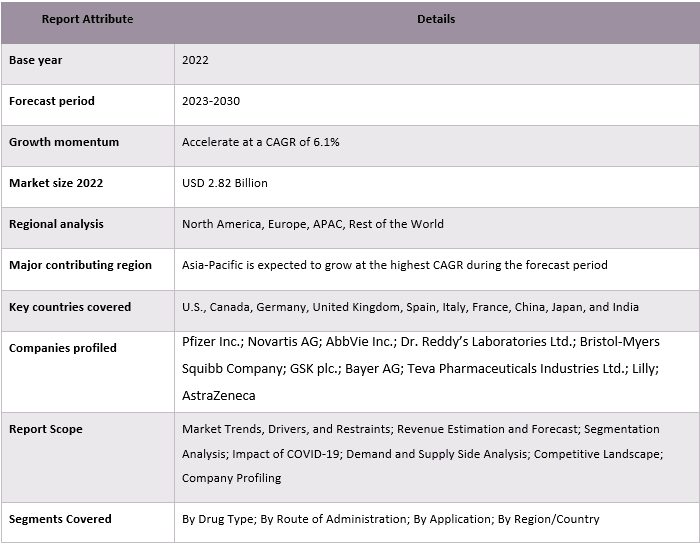
Powody, dla których warto kupić ten raport:
- Badanie obejmuje analizę wielkości i prognozowania rynku, zatwierdzoną przez autentycznych ekspertów branżowych.
- Raport przedstawia szybki przegląd ogólnej wydajności branży w jednym spojrzeniu.
- Raport zawiera dogłębną analizę czołowych podmiotów w branży, ze szczególnym uwzględnieniem kluczowych wskaźników finansowych, portfeli produktów, strategii ekspansji i ostatnich wydarzeń.
- Szczegółowa analiza czynników napędzających, ograniczeń, kluczowych trendów i możliwości występujących w branży.
- Badanie kompleksowo obejmuje rynek w różnych segmentach.
- Dogłębna analiza branży na poziomie regionalnym.
Opcje Dostosowywania:
Globalny rynek inhibitorów fosfodiesterazy (PDE) można dalej dostosować zgodnie z wymaganiami lub jakimkolwiek innym segmentem rynku. Poza tym, UMI rozumie, że możesz mieć własne potrzeby biznesowe, dlatego zachęcamy do kontaktu z nami, aby uzyskać raport, który w pełni odpowiada Twoim wymaganiom.
Spis treści
Metodologia Badań dla Inhibitorów Fosfodiesterazy (PDE)
Analiza Rynku (2022-2030)
Analiza historycznego rynku, szacowanie obecnego rynku i prognozowanie przyszłego rynku globalnego rynku inhibitorów fosfodiesterazy (PDE) były trzema głównymi krokami podjętymi w celu stworzenia i analizy adopcji inhibitorów fosfodiesterazy (PDE) w głównych regionach na całym świecie. Przeprowadzono wyczerpujące badania wtórne w celu zebrania historycznych danych rynkowych i oszacowania bieżącej wielkości rynku. Po drugie, aby zweryfikować te spostrzeżenia, wzięto pod uwagę liczne ustalenia i założenia. Co więcej, przeprowadzono również wyczerpujące wywiady pierwotne z ekspertami branżowymi w całym łańcuchu wartości globalnego rynku inhibitorów fosfodiesterazy (PDE). Po założeniu i walidacji danych rynkowych poprzez wywiady pierwotne, zastosowaliśmy podejście odgórne/oddolne do prognozowania całkowitej wielkości rynku. Następnie przyjęto metody rozkładu rynku i triangulacji danych w celu oszacowania i analizy wielkości rynku segmentów i podsegmentów branży. Szczegółowa metodologia wyjaśniona jest poniżej:
Analiza Historycznej Wielkości Rynku
Krok 1: Szczegółowe Badanie Źródeł Wtórnych:
Przeprowadzono szczegółowe badanie wtórne w celu uzyskania historycznej wielkości rynku inhibitorów fosfodiesterazy (PDE) za pośrednictwem wewnętrznych źródeł firmy, takich jakraporty roczne i sprawozdania finansowe, prezentacje wyników, komunikaty prasowe itp.,oraz źródeł zewnętrznych, w tymczasopisma, wiadomości i artykuły, publikacje rządowe, publikacje konkurencji, raporty sektorowe, bazy danych stron trzecich i inne wiarygodne publikacje.
Krok 2: Segmentacja rynku:
Po uzyskaniu historycznej wielkości rynku inhibitorów fosfodiesterazy (PDE), przeprowadziliśmy szczegółową analizę wtórną w celu zebrania historycznych informacji i udziałów rynkowych dla różnych segmentów i podsegmentów dla głównych regionów. Główne segmenty uwzględnione w raporcie to typ leku, droga podania, zastosowanie i region. Przeprowadzono dalsze analizy na poziomie krajowym w celu oceny ogólnego przyjęcia modeli testowych w danym regionie.
Krok 3: Analiza czynnikowa:
Po uzyskaniu historycznej wielkości rynku różnych segmentów i podsegmentów, przeprowadziliśmy szczegółową analizę czynnikową w celu oszacowania bieżącej wielkości rynku inhibitorów fosfodiesterazy (PDE). Ponadto przeprowadziliśmy analizę czynnikową z wykorzystaniem zmiennych zależnych i niezależnych, takich jak typ leku, droga podania, zastosowanie i region rynku inhibitorów fosfodiesterazy (PDE). Przeprowadzono dokładną analizę scenariuszy popytu i podaży, uwzględniając najważniejsze partnerstwa, fuzje i przejęcia, ekspansję biznesową i wprowadzenia produktów na rynek inhibitorów fosfodiesterazy (PDE) na całym świecie.
Szacowanie i prognoza bieżącej wielkości rynku
Szacowanie bieżącej wielkości rynku:W oparciu o praktyczne spostrzeżenia z powyższych 3 kroków, doszliśmy do bieżącej wielkości rynku, kluczowych graczy na globalnym rynku inhibitorów fosfodiesterazy (PDE) oraz udziałów rynkowych segmentów. Wszystkie wymagane podziały udziałów procentowych i podziały rynku zostały określone przy użyciu wspomnianego powyżej podejścia wtórnego i zostały zweryfikowane poprzez wywiady pierwotne.
Szacowanie i prognozowanie:Do szacowania i prognozowania rynku przypisano wagi do różnych czynników, w tym czynników napędzających i trendów, ograniczeń i możliwości dostępnych dla interesariuszy. Po przeanalizowaniu tych czynników zastosowano odpowiednie techniki prognozowania, tj. podejście top-down/bottom-up, aby uzyskać prognozę rynku na 2030 rok dla różnych segmentów i podsegmentów na głównych rynkach na całym świecie. Metodologia badawcza przyjęta do oszacowania wielkości rynku obejmuje:
- Wielkość rynku branży w ujęciu przychodów (USD) i wskaźnik przyjęcia rynku inhibitorów fosfodiesterazy (PDE) na głównych rynkach krajowych
- Wszystkie udziały procentowe, podziały i podziały segmentów i podsegmentów rynku
- Kluczowi gracze na globalnym rynku inhibitorów fosfodiesterazy (PDE) w zakresie oferowanych produktów. Ponadto, strategie wzrostu przyjęte przez tych graczy w celu konkurowania na szybko rozwijającym się rynku
Walidacja wielkości i udziału w rynku
Badania pierwotne:Przeprowadzono dogłębne wywiady z kluczowymi liderami opinii (KOL), w tym z dyrektorami najwyższego szczebla (CXO/VP, szef sprzedaży, szef marketingu, szef operacyjny, szef regionalny, szef krajowy itp.) w głównych regionach. Wyniki badań pierwotnych zostały następnie podsumowane i przeprowadzono analizę statystyczną w celu udowodnienia postawionej hipotezy. Dane z badań pierwotnych zostały skonsolidowane z ustaleniami wtórnymi, przekształcając tym samym informacje w praktyczne spostrzeżenia.
Podział uczestników pierwotnych w różnych regionach
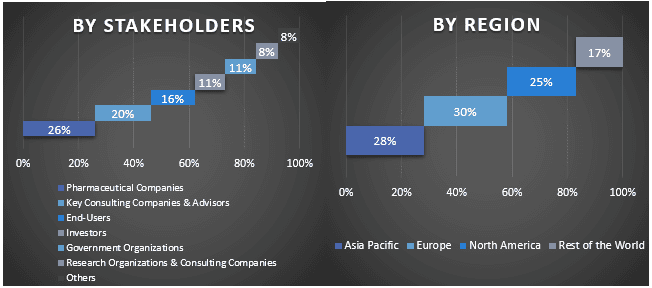
Inżynieria rynku
Zastosowano technikę trygulacji danych w celu zakończenia ogólnego oszacowania rynku i uzyskania precyzyjnych danych statystycznych dla każdego segmentu i podsegmentu globalnego rynku inhibitorów fosfodiesterazy (PDE). dane zostały podzielone na kilka segmentów i podsegmentów po przestudiowaniu różnych parametrów i trendów w obszarach typu leku, drogi podania, zastosowania i regionu na globalnym rynku inhibitorów fosfodiesterazy (PDE).
Główny cel badania globalnego rynku inhibitorów fosfodiesterazy (PDE)
W badaniu określono bieżące i przyszłe trendy rynkowe globalnego rynku inhibitorów fosfodiesterazy (PDE). Inwestorzy mogą uzyskać strategiczne spostrzeżenia, aby oprzeć swoją decyzję o inwestycjach na analizie jakościowej i ilościowej przeprowadzonej w badaniu. Obecne i przyszłe trendy rynkowe określiły ogólną atrakcyjność rynku na poziomie regionalnym, zapewniając platformę dla uczestnika przemysłowego do wykorzystania niewykorzystanego rynku w celu skorzystania z przewagi pierwszego gracza. Inne cele ilościowe badań obejmują:
- Analiza bieżącej i prognozowanej wielkości rynku inhibitorów fosfodiesterazy (PDE) w ujęciu wartości (USD). Ponadto analiza bieżącej i prognozowanej wielkości rynku różnych segmentów i podsegmentów
- Segmenty w badaniu obejmują obszary typu leku, drogi podania, zastosowania i regionu.
- Definicja i analiza ram regulacyjnych dla branży inhibitorów fosfodiesterazy (PDE)
- Analiza łańcucha wartości związanego z obecnością różnych pośredników, wraz z analizą zachowań klientów i konkurencji w branży
- Analiza bieżącej i prognozowanej wielkości rynku inhibitorów fosfodiesterazy (PDE) dla głównych regionów
- Główne kraje regionów objętych badaniem obejmują region Azji i Pacyfiku, Europę, Amerykę Północną i resztę świata
- Profile firm rynku inhibitorów fosfodiesterazy (PDE) i strategie wzrostu przyjęte przez graczy rynkowych w celu utrzymania się na szybko rozwijającym się rynku
- Dogłębna analiza regionalna branży
Powiązane Raporty
Klienci, którzy kupili ten przedmiot, kupili również

